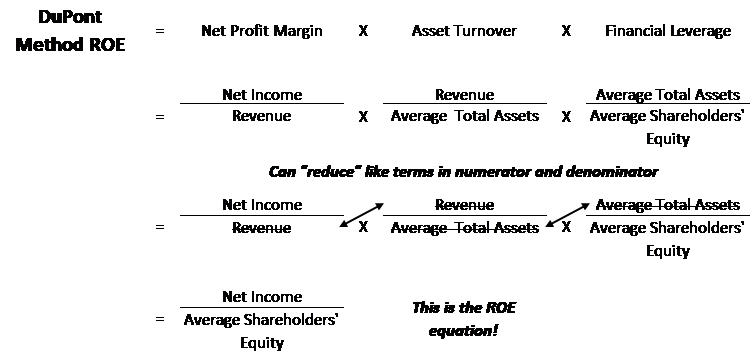Contents:


Multimedia Hub Listen to the Mind the Business podcast by QuickBooks and iHeart. Self-Employed The tools and resources you need to run your own business with confidence. Midsize Businesses The tools and resources you need to manage your mid-sized business. Your Guide to Growing a Business The tools and resources you need to take your business to the next level. Your Guide to Running a Business The tools and resources you need to run your business successfully.
If a business’s quick ratio is less than 1, it means it doesn’t have enough quick assets to meet all its short-term obligations. If it suffers an interruption, it may find it difficult to raise the cash to pay its creditors. The quick ratio is an important measure of the company’s ability to meet its short-term obligations if cash flow becomes an issue. The quick ratio also doesn’t say anything about the company’s ability to meet obligations from normal cash flows. It measures only the company’s ability to survive a short-term interruption to normal cash flows or a sudden large cash drain.
Lenders also use the quick ratio to track liquidity when assessing creditworthiness. Small businesses are prone to unexpected financial hits that can disrupt cash flow. If there’s a cash shortage, you may have to dig into your personal funds to pay employees, lenders, and bills. For example, if you have a five-year loan for a vehicle, the next 12 months of payments will be a current liability. The higher the quick ratio, the more financially stable a company tends to be, as you can use the quick ratio for better business decision-making.
The quick ratio is a more appropriate metric to use when working or analyzing a shorter time frame. Consider a company with $1 million of current assets, 85% of which is tied up in inventory. Both the current ratio and quick ratio measure a company’s short-termliquidity, or its ability to generate enough cash to pay off all debts should they become due at once. Although they’re both measures of a company’s financial health, they’re slightly different. The quick ratio is considered more conservative than the current ratio because its calculation factors in fewer items. It is precisely an indicator of a company’s ability or limitation in discharging its debts and obligations.
Components of the quick ratio
The clothing store’s quick ratio is 1.21 ($10,000 + $5,000 + $2,000) / $14,000. Anjana Dhand is a Chartered Accountant who brings over 5 years of experience and a stronghold on finance and income tax. She is on a mission to stamp out unawareness and uncomplicate boring personal finance blogs to sparkle. Anjana believes in the power of education in making a smart financial decision. Non-current liabilities (i.e. long-term borrowings and long-term provisions). In the absence of opening creditors and bills payable, closing creditors and bills payable can be used in the above formula.
The quick ratios solve this problem by considering only short-term assets. Quick ratios are very popular with analysts looking at the liquidity of a business. Quick ratios have an advantage over the current ratio in that they exclude inventory from the equation. This is because inventory is an asset that might be difficult to convert into cash. As such, selling those resources would hurt the company’s ability to generate revenue and also indicate that its current activities aren’t creating adequate profits to cover its current liabilities. A major component of quick assets for most companies is their accounts receivable.
Early liquidation or premature withdrawal of assets like interest-bearing securities may lead to penalties or discounted book value. Cash equivalents are often an extension of cash as this account often houses investments with very low risk and high liquidity. The optimal quick ratio for a business depends on a number of factors, including the nature of the industry, the markets in which it operates, its age and its creditworthiness. Lenders and investors use the quick ratio to help decide whether a business is a good bet for a loan or investment. The ratio excludes inventory from the calculation, which is counterproductive for companies with high inventory. For example, supermarkets have high inventory which is easily valued at a marketable price.
Quick assets
They are considered to be the most liquid assets that a company owns. A ratio higher than 1.0 means that the company has more money than it needs. For example, a ratio of 2.0 means that the company has $2 on hand for every $1 it owes. This is generally good, as it means that the company can easily make payments on any of its debts.
In other words, a company shouldn’t incur a high cost when liquidating the asset. Operating profit ratio Operating profit ratio establishes the relationship between the operating profit and i.e. net sales. Operating profit ratio is an indicator of operational efficiency of the business. Profitability Ratios These ratios measure the profitability of a business assessing the and helps in overall efficiency of the business.
Formula
It is also called the “acid-test” or “penny value” ratio because it measures a company’s ability to pay its current liabilities with its most liquid assets. Creditors and investors use the quick ratio to determine whether a company is a suitable option for funding or investment. It enables investors and creditors in understanding the readiness of a company to face any financial unexpected crisis.
If a short note on quick ratio has a current ratio of less than one, it has fewer current assets than current liabilities. Creditors would consider the company a financial risk because it might not be able to easily pay down its short-term obligations. If a company has a current ratio of more than one, it is considered less of a risk because it couldliquidate its current assets more easily to pay down short-term liabilities. Such current assets cannot be utilised in order to pay for other liabilities.
The quick ratio considers only assets that can be converted to cash in a short period of time. The current ratio, on the other hand, considers inventory and prepaid expense assets. In most companies, inventory takes time to liquidate, although a few rare companies can turn their inventory fast enough to consider it a quick asset. Prepaid expenses, though an asset, cannot be used to pay for current liabilities, so they’re omitted from the quick ratio. The quick ratio is calculated by dividing a company’s most liquid assets like cash, cash equivalents, marketable securities, and accounts receivables by total current liabilities. The quick ratio is the value of a business’s “quick” assets divided by its current liabilities.
The higher the quick ratio, the better a company’s liquidity and financial health, but it important to look at other related measures to assess the whole picture of a company’s financial health. The quick ratio is a useful indicator of a company’s ability to manage cash flow problems without resorting to fire sales or borrowing money. The quick ratio is widely used by lenders and investors to gauge whether a company is a good bet for financing or investment. Potential creditors want to know whether they will get their money back if a business runs into problems, and investors want to ensure a firm can weather financial storms.
Such debts or obligations are discharged by liquid assets held by the company. Liquid assets involve such assets which may be converted into cash with negligible impact to its price in the open market. Current liabilities are a company’s short-term debts due within one year or one operating cycle. Accounts payable is one of the most common current liabilities in a company’s balance sheet. It can also include short-term debt, dividends owed, notes payable, and income taxes outstanding. Accounts receivable, cash and cash equivalents, and marketable securities are the most liquid items in a company.
- For example, a liability may allow for variable times or forms of payment, or the company may have access to credit and refinancing options.
- On the other hand, a company could negotiate rapid receipt of payments from its customers and secure longer terms of payment from its suppliers, which would keep liabilities on the books longer.
- When ratios are calculated on the basis of accounting information, they are called accounting ratios.
- This is important because leaving this information out can give a false impression, making the company seem financially weaker than it actually is.
- However, this depends on the company’s clients making their payments in a timely fashion.
When analyzing a company, investors and creditors want to see a company with liquidity ratios above 1.0. A company with healthy liquidity ratios is more likely to be approved for credit. Given the structure of the ratio, with assets on top and liabilities on the bottom, ratios above 1.0 are sought after.
The ability to rapidly convert assets to cash can be pivotal to help the company survive a crisis. The quick ratio provides insight into your company’s ability to sell assets if needed. All told, client payments and supplier terms both affect a company’s ability to meet its short-term obligations. However, the quick ratio doesn’t factor in these payment terms, so it may overstate or understate a company’s real liquidity position.

As a result, even the quick ratio may not give an accurate representation of liquidity if the receivables are not easily collected and converted to cash. The quick ratio only considers highly-liquid assets or cash equivalents as part of current assets, making it a more conservative approach to gauging liquidity. Quick ratio on its own may not suffice in analysing the liquidity of a company. It should also take into consideration the cash flow ratio or the current ratio for determining an accurate and comprehensive estimation of the liquidity of a company. Quick ratio assesses the dollar amount of the various liquid assets at the disposal of a company against the equivalent amount of its existing liabilities.
Columbia Banking System Stock Sees Spike in Short Interest … – Best Stocks
Columbia Banking System Stock Sees Spike in Short Interest ….
Posted: Tue, 02 May 2023 04:32:03 GMT [source]
A liquidity ratio is a type of financial ratio used to determine a company’s ability to pay its short-term debt obligations. The metric helps determine if a company can use its current, or liquid, assets to cover its current liabilities. It should be noted that current assets may contain a large inventory, andprepaid expensesmay not be liquid.
Learn accounting fundamentals and how to read financial statements with CFI’s free online accounting classes. To learn more about this ratio and other important metrics, check out CFI’s course onperforming financial analysis. David Kindness is a Certified Public Accountant and an expert in the fields of financial accounting, corporate and individual tax planning and preparation, and investing and retirement planning. David has helped thousands of clients improve their accounting and financial systems, create budgets, and minimize their taxes. The borrower collects payments from customers directly and uses that cash to repay the loan. The credit standing of the end customer, in addition to the financial stability of the borrowing company, may affect the rate.
A successful business needs an efficient financing process that meets its specific needs. Quick ratios are not very useful for comparing companies in different industries. Each industry has a different set of working capital requirements, making this ratio challenging to reach. However, if you want to compare two companies in the same industry, this ratio can help determine which one has better liquidity. A high quick ratio is an indication that a company is utilizing its short-term assets effectively to meet its financial needs. The value of the company’s quick assets is $3 million ($200,000 + $300,000 + $2,500,000).
A higher than the average industry ratio may imply that the company is investing too much of its resources in the business’s working capital, which may be more profitable elsewhere. However, if the quick ratio is lower than the industry average, the company is taking a high risk and not maintaining adequate liquidity. The quick ratio has the advantage of being a more conservative estimate of how liquid a company is. Compared to other calculations that include potentially illiquid assets, the quick ratio is often a better true indicator of short-term cash capabilities. Regardless of which method is used to calculate quick assets, the calculation for current liabilities is the same as all current liabilities are included in the formula.
Expedia Group, Inc. (NASDAQ:EXPE) Short Interest Update – MarketBeat
Expedia Group, Inc. (NASDAQ:EXPE) Short Interest Update.
Posted: Sat, 29 Apr 2023 13:23:37 GMT [source]
In other words, it measures the proportion of a business’s current liabilities that it can meet with cash and assets that can be readily converted to cash. Walmart’s short-term liquidity worsened from 2021 to 2022, though it appears to have almost enough current assets to pay off current debts. A wide majority of current assets are not tied up in cash, as the quick ratio is substantially less than the current ratio. In addition, though its quick ratio only dropped a little, there are bigger changes in cash on hand versus the balances in accounts receivable.
It is calculated by dividing the amount of cash in a company’s current assets by its total current liabilities. The quick ratio measures how well a company can meet its short-term liabilities (such as debts payment, payroll, inventory costs, etc.) with its cash on hand. In this case “cash” is defined as either actual cash or cash-like assets which can quickly be converted. Cash-like assets are traditionally defined as liquid properties that the company can easily sell off, such as stocks, or near-term revenue, such as accounts due for collection. These are the company’s “quick” assets, giving the quick ratio its name. The quick ratio also measures the liquidity of a company by measuring how well its current assets could cover its current liabilities.

Add Comment